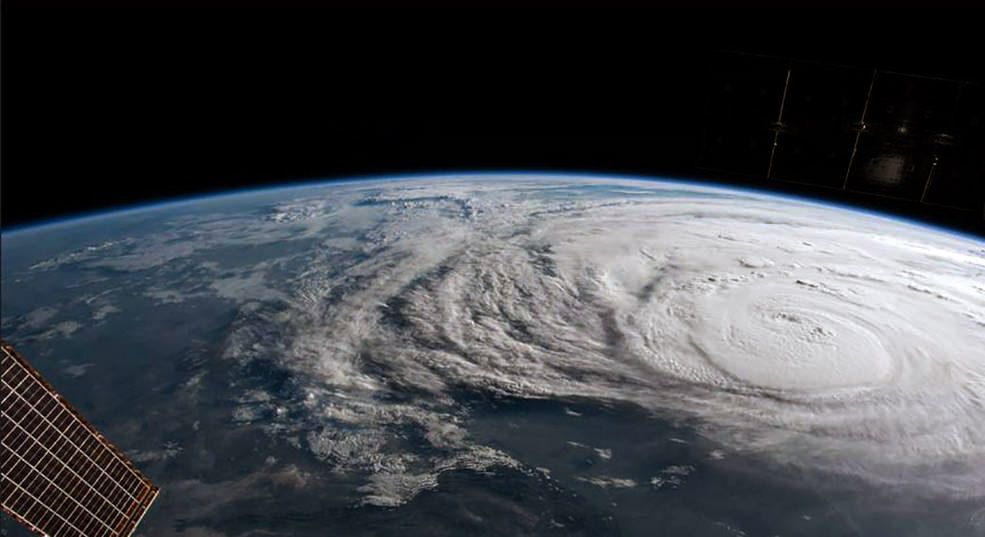
Tropical storms have the power to cause massive destruction and widespread loss of human life, as was demonstrated by last year's deadly Atlantic hurricane season, which caused hundreds of deaths and $280 billion worth of damage. And as the world warms, scientists think these devastating events will only become more frequent and extreme.
But what if there were a way to prevent hurricanes from making landfall in the first place?
While this idea may seem a little farfetched, Norwegian scientists from SINTEF, the largest independent research organization in Scandinavia, say they have a feasible solution that involves, of all things, blowing cold air bubbles into the sea.
Hurricanes are generated in the tropics when masses of cold and hot air collide with one another. But crucially, the sea surface temperature must be more than 79.7 degrees Fahrenheit, or 26.5 degrees Celsius, for a storm to form.
"Climate change is causing sea surface temperatures to increase," said Grim Eidnes, a senior research scientist at SINTEF Ocean, in a statement. "The critical temperature threshold at which evaporation is sufficient to promote the development of hurricanes is 26.5 degrees Celsius. In the case of hurricanes Harvey, Irma and Maria that occurred in the Gulf of Mexico in the period August to September 2017, sea surface temperatures were measured at 32 degrees Celsius [89.6 degrees Farenheit]."
So, if there were a way to cool the surface temperature to below the magic 79.7 degrees Fahrenheit mark, then, in theory, humans could stop hurricanes.
Various radical solutions have already been proposed to tackle this problem. One suggestion involved towing icebergs from the Arctic into the Gulf of Mexico. Another proposal suggested the use of seeding clouds with salt to make them whiter and therefore more reflective, which would block heat from the sun and reduce sea surface temperatures. Scientists have even tried to use aircraft to release dry ice near hurricanes, in an attempt to increase precipitation, which would release some of their destructive energy.
However, none of these proposals or ideas have been much of a success, according to Eidnes.
Now, the SINTEF researchers are developing a relatively simple method, known as a "bubble curtain," which may prove to be more successful.
The bubble curtain method involves placing perforated pipes below the water before pumping bubbles of compressed air through them. The idea is that the bubbles will rise, taking cold water with them that will cool the surface.
The SINTEF team say that, ideally, the pipes should be placed between 100 and 150 meters below the surface to ensure that the water being carried to the surface is cold enough.
"By bringing this water to the surface using the bubble curtains, the surface temperature will fall to below 26.5 degrees Celsius, thus cutting off the hurricane's energy supply," Eidnes said. "This method will allow us quite simply to prevent hurricanes from achieving life-threatening intensities."
The researchers say that such a system of pipes could be deployed on a large scale. One region they have highlighted as being a particularly suitable place to test the technology is the Yucatan Straits, which connects the Yucatan basin in the Caribbean Sea with the Gulf of Mexico.
The pipes could be installed all along the mainland coastline or integrated with the more than 4,000 oil production platforms in the region. Furthermore, the pipes would not be an obstruction to shipping, the researchers said.
Promisingly, bubble curtains have already been tried and tested, albeit for different purposes. Norway, for example, has been using the technology for many years to keep its fjords free from ice.
"During Norwegian winters, sea surface water is colder than at depth, so by lifting warmer water to the surface using bubble curtains, we can prevent the fjords from icing up," Eidnes said.
The idea of cooling the ocean surface to prevent hurricanes was first proposed by Olav Hollingsæter, founder of the company OceanTherm, which is dedicated to this goal. After witnessing the devastation caused by Katrina, Hollingsæter contacted researchers at SINTEF—who had been testing bubble curtains for the purpose of restricting the spread of oil spills—with his idea, giving birth to the latest project.
"The cost-benefit potential of the SINTEF project is very great," Hollingsæter said in a statement. "The most intense hurricanes cause communities major material damage and, in some cases, many lives are lost. This project is both meaningful and important. I hope and believe that we will succeed."
Uncommon Knowledge
Newsweek is committed to challenging conventional wisdom and finding connections in the search for common ground.
Newsweek is committed to challenging conventional wisdom and finding connections in the search for common ground.
About the writer
Aristos is a Newsweek science reporter with the London, U.K., bureau. He reports on science and health topics, including; animal, ... Read more
To read how Newsweek uses AI as a newsroom tool, Click here.








